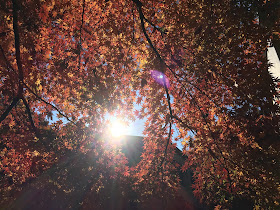
 Just as people track the cherry blossom front (sakura zensen =桜前線) as it moves north, the foliage front (kōyō zensen =紅葉前線)can also be tracked as it moves south, starting in Hokkaido around September. The best time (higoro =見頃) to view the leaves changing colour is said to be 20 to 25 days after first announced, so from October in Hokkaido. One of the best places to view the foliage is undeniably the temples and shrines of Kyoto, such as Kiyomizu Temple, which are dominated by the red momiji with very few yellow ginkgo/gingko trees. See here for a list of the top-ten spots for kōyō in Japan. Around Tokyo, Mount Takao is a beautiful spot to view the leaves but can get very crowded.
Just as people track the cherry blossom front (sakura zensen =桜前線) as it moves north, the foliage front (kōyō zensen =紅葉前線)can also be tracked as it moves south, starting in Hokkaido around September. The best time (higoro =見頃) to view the leaves changing colour is said to be 20 to 25 days after first announced, so from October in Hokkaido. One of the best places to view the foliage is undeniably the temples and shrines of Kyoto, such as Kiyomizu Temple, which are dominated by the red momiji with very few yellow ginkgo/gingko trees. See here for a list of the top-ten spots for kōyō in Japan. Around Tokyo, Mount Takao is a beautiful spot to view the leaves but can get very crowded.If you want to avoid the crowds and cold, you can enjoy momiji in the comfort of your own home - in the form of Momiji-Manjū (もみじ饅頭) - a steamed bun originating in Hiroshima containing sweet bean paste shaped like a Japanese maple leaf (pictured below). Perfect with a cup of hot green tea and a mikan (satsuma mandarin orange) as you keep warm under your kotatsu (low heated table)!

